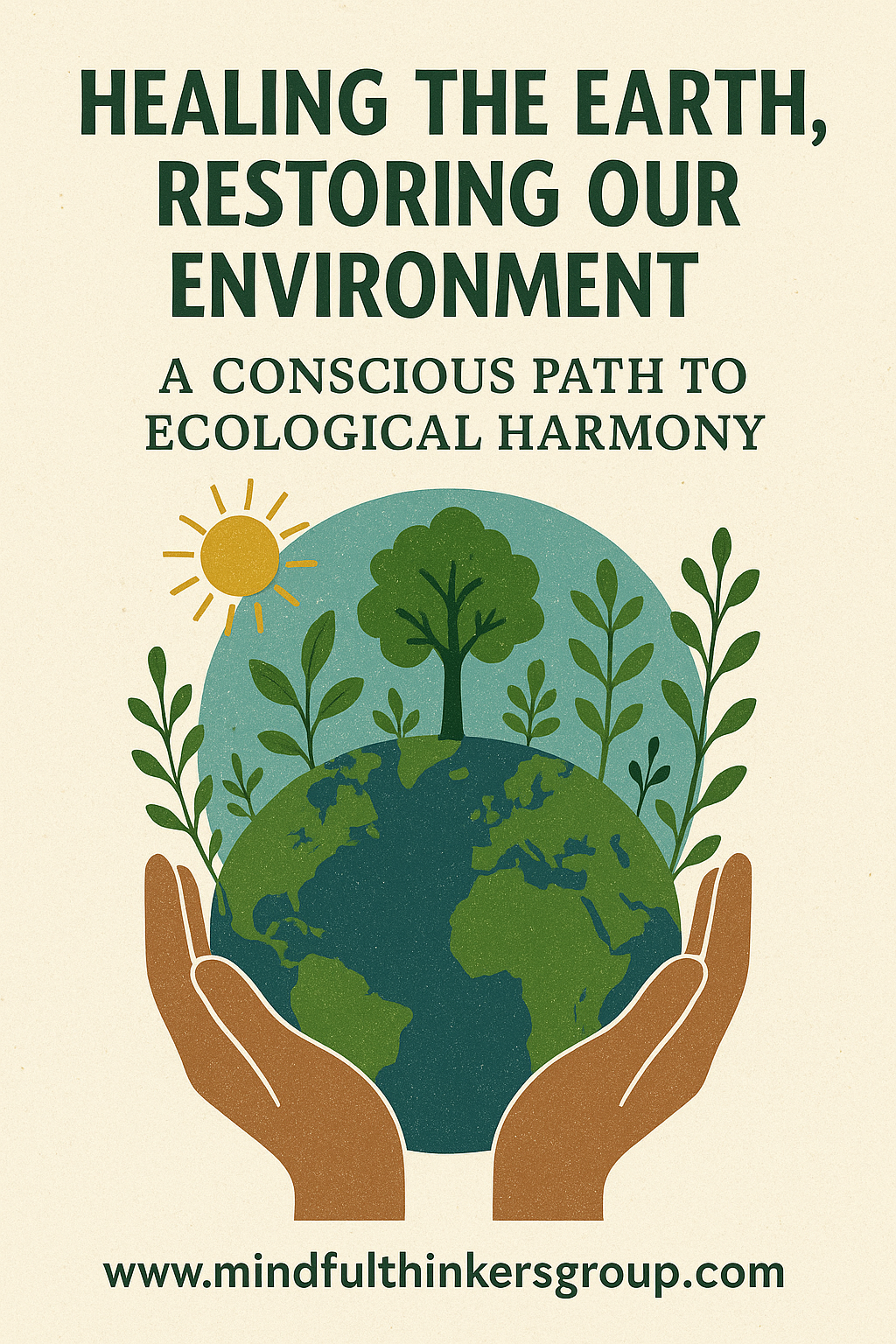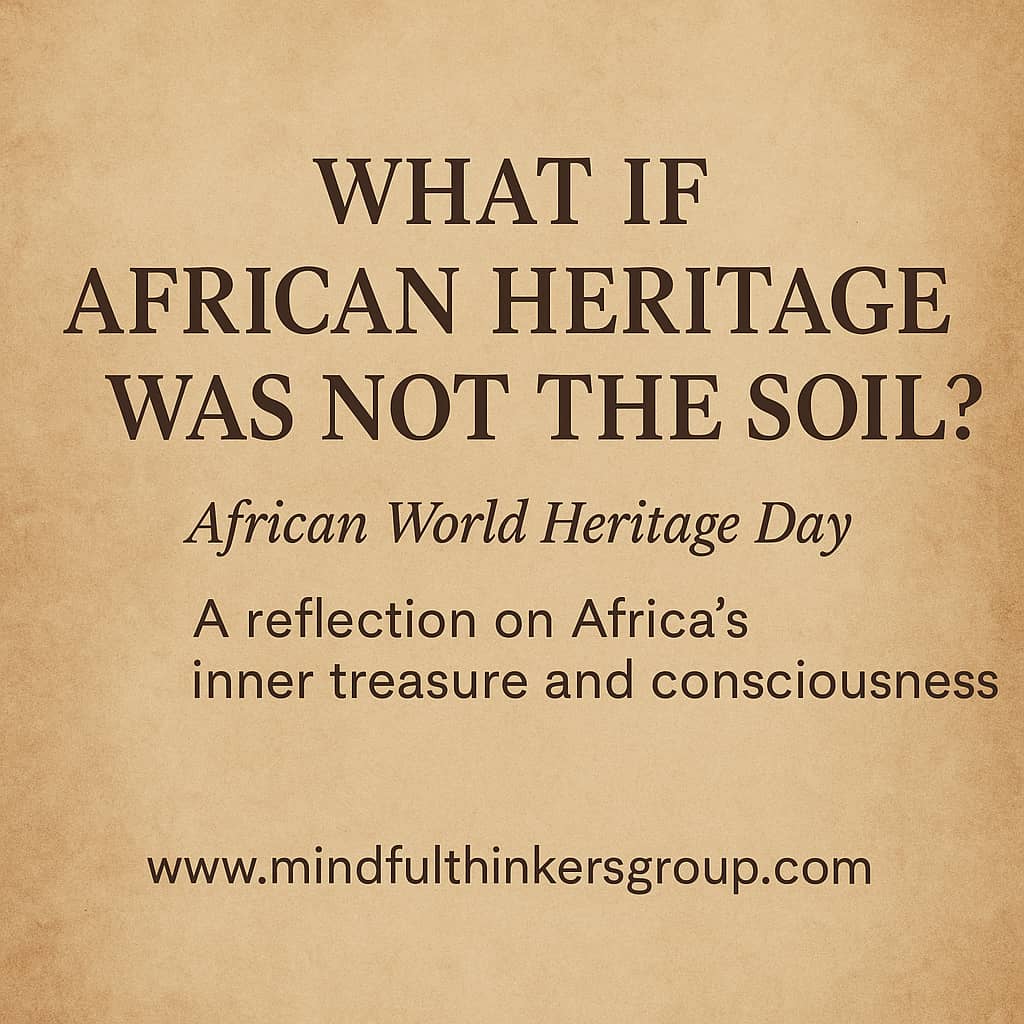The Earth is not just the ground beneath our feet. It is the pulse in our chest, the air in our lungs, the rhythm of life moving through all things. We often speak of “the environment” as if it’s something outside of us — trees, rivers, weather, oceans. But in truth, the environment is an extension of our being. What we do to it, we do to ourselves.
We live in a time when the consequences of separation — from nature, from each other, from our own awareness — are painfully evident. Forests are thinning. Waters are polluted. Soils are stripped. Climate patterns shift erratically. And yet, the greatest crisis may be the forgetting: that we are participants in a sacred system, not masters over it.
Biologists classify life on Earth into five kingdoms: Monera, Protista, Fungi, Plantae, and Animalia. These are not abstract categories; they are the ancient family tree of existence. Bacteria cleanse and nourish the soil. Algae and plankton produce oxygen and sustain ocean life. Fungi connect forests underground, recycling the dead to feed the living. Plants offer food, oxygen, and balance. Animals — including us — dance within this web, pollinating, grazing, decomposing, migrating, and maintaining equilibrium.
Nothing lives in isolation. Each organism depends on another. Disrupt one thread, and the entire web trembles. The soil depends on bacteria. The tree depends on fungi. The bee depends on flowers. And we depend on all of it. This is not poetic metaphor — this is ecological fact.
But there is a deeper truth. The Earth is not only biological; it is also spiritual. And so is the crisis. We do not just face a loss of biodiversity — we face a loss of reverence. The unconscious habits that destroy the Earth mirror the unconscious thoughts that dull the human soul. Overconsumption, waste, exploitation — these are symptoms of a deeper disconnection from the wisdom of nature and the stillness within.
Mindfulness becomes a form of activism. When we eat with awareness, buy with intention, walk with presence, plant with gratitude — we are healing. Consciousness becomes ecological. When we see ourselves not as consumers, but as caretakers, not as conquerors, but as kin — we are remembering.
This path of healing is not new. Indigenous peoples around the world have walked it for generations — guided by ceremony, story, observation, and humility. Today, their knowledge intersects with modern sustainability science, offering a way back that is not backward, but forward with depth.
We are rediscovering practices that restore rather than extract. No-till farming, which leaves soil structure intact and allows life below to thrive. Agroforestry, which integrates trees into farming systems, mimicking natural ecosystems. Permaculture, which creates closed-loop, zero-waste designs based on nature’s own intelligence. Rainwater harvesting, swales, composting, seed saving — small actions with exponential potential. Even controlled burns — once misunderstood — are being re-embraced as ancient fire medicine that renews the land when done with care.
You don’t need a farm to be a restorer. You can begin in your own kitchen, your balcony garden, your neighborhood. Compost your scraps. Grow herbs. Choose food that honors the farmer and the soil. Speak to your children about where water comes from. Learn the names of local birds. Pick up litter not just for tidiness, but out of gratitude.
The Earth does not ask us to be perfect. Only to be present.
And so, as we mark this World Environment Day, let us go beyond slogans and statistics. Let us listen. To the birdsong at dawn. To the rustle of leaves in wind. To the silent labor of worms turning waste into wealth. Let us slow down. Let us bow. Let us reenter the circle of life with humility and joy.
The Earth is not just something we save. It is something we are. And when we begin to heal the Earth — through our thoughts, our habits, our hands — we begin to heal ourselves.




